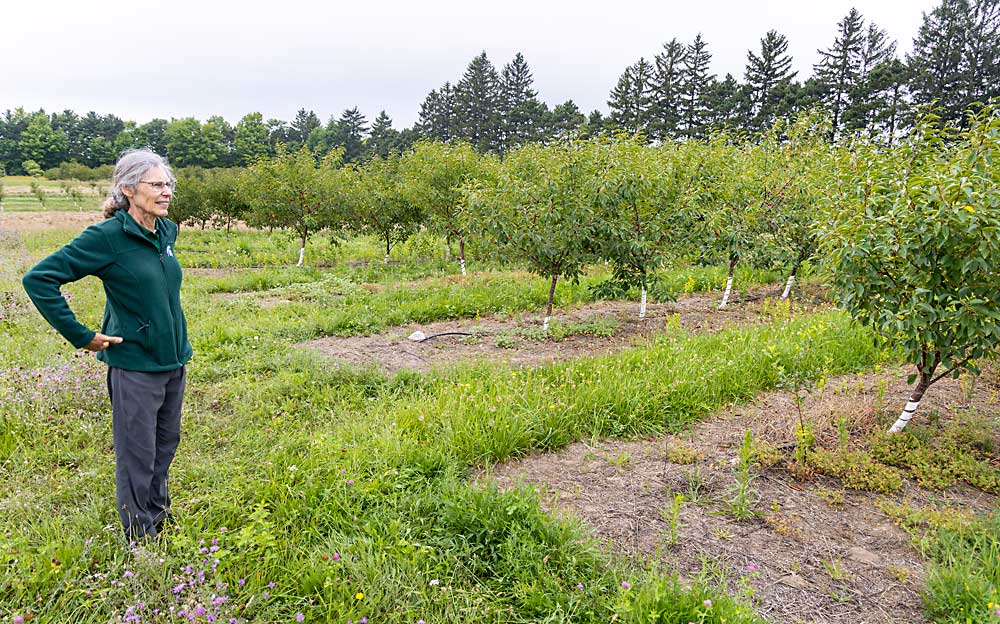
The perfect tart cherry is within reach. It’s as red, flavorful and high-yielding as Montmorency but has firmer flesh and resistance to cherry leaf spot. It blooms after spring freeze events, but it still harvests before spotted wing drosophila populations explode. It also fits well with dwarfing rootstocks and an over-the-row mechanical harvester.
That ideal cherry doesn’t yet exist, but its genetic building blocks are in place. It will take a fruit breeder, using new DNA-based tools, to combine all those desirable traits into a single variety.
That new breeder will build on decades of work by Amy Iezzoni, a longtime horticulture professor at Michigan State University. Iezzoni, the nation’s only tart cherry breeder, officially retired at the end of July. Now 66, she hasn’t stopped working completely. She’s still evaluating trial blocks, making crosses and working with a doctoral student. When MSU hires a successor, she plans to work closely with them until they’re ready to move forward.
“We’ve made a lot of progress on improving certain traits,” Iezzoni said. “We just haven’t packaged them all into one selection yet.”
Jim Nugent — grower, chair of the Michigan Tree Fruit Commission and former coordinator of MSU’s Northwest Michigan Horticulture Research Center — said a better variety, or varieties, is closer than ever, thanks to the work done by Iezzoni.
“The probability of success is going to be much higher now that we have the tools Amy was instrumental in developing,” he said. “She deserves a lot of credit for what she’s done.”
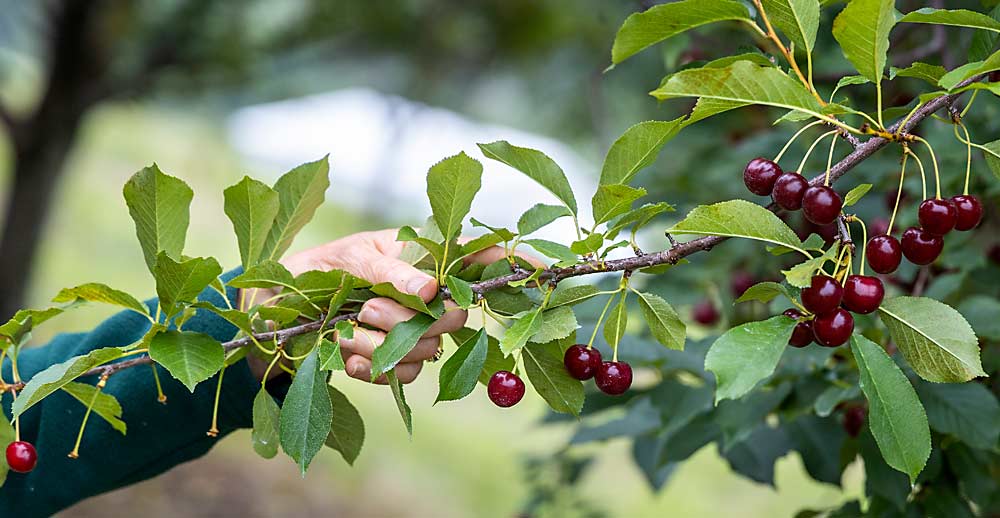
Starting from scratch
MSU hired Iezzoni as a stone fruit breeder in 1981, after she earned a doctorate in plant breeding and genetics from the University of Wisconsin-Madison. She decided to focus on tart cherries, the top stone fruit in Michigan. Because she was starting a breeding program from scratch, her first major task was collecting germplasm. She spent about 10 years as an international plant collector, concentrating her travels in Eastern Europe, the center of tart cherry diversity. By the time she was finished, MSU housed the largest collection of tart cherry germplasm in the world.
Four decades ago, there was no DNA information available to fruit breeders, and they largely “worked in the dark.” Crosses took years to reveal their traits, and successes were often a matter of luck. But genetic discoveries made over the last two or three decades have added speed and certainty to the breeding process, she said.
Seeking to take advantage of these trends and pool their genetic discoveries, Iezzoni and dozens of other fruit breeders and geneticists formed RosBREED more than a decade ago, a nationwide project focused on breeding new cultivars of Rosaceae crops using DNA-based tools. Iezzoni served as RosBREED’s director until the project ended in 2019.
Among other things, the new genetic tools helped Iezzoni detect and purge the tart cherry’s self-incompatibility trait from her breeding program — a trait that would have been hard to detect otherwise.
“Breeders today can work with genetic information that I never had,” she said. “I think it’s a great time for somebody to come in and be more data-driven.”
But change comes slowly in the tart cherry industry.
Whereas apple breeding programs release new varieties with some frequency, the nation’s only tart cherry breeding program has yet to release a new variety. Much of that has to do with the way the industries are structured. The tart cherry industry has been organized around a single variety, Montmorency, for decades. Any replacement would have to keep Montmorency’s strengths and improve on its weaknesses.
And as a processing crop with no real fresh market, there’s not much room in consumer palates for new tart cherry varieties. When Iezzoni released Balaton, a variety bred in Hungary, into the U.S. market in the late 1990s, the darker, firmer cherry found a fairly profitable niche for itself, but it didn’t expand the tart cherry market in any significant way.
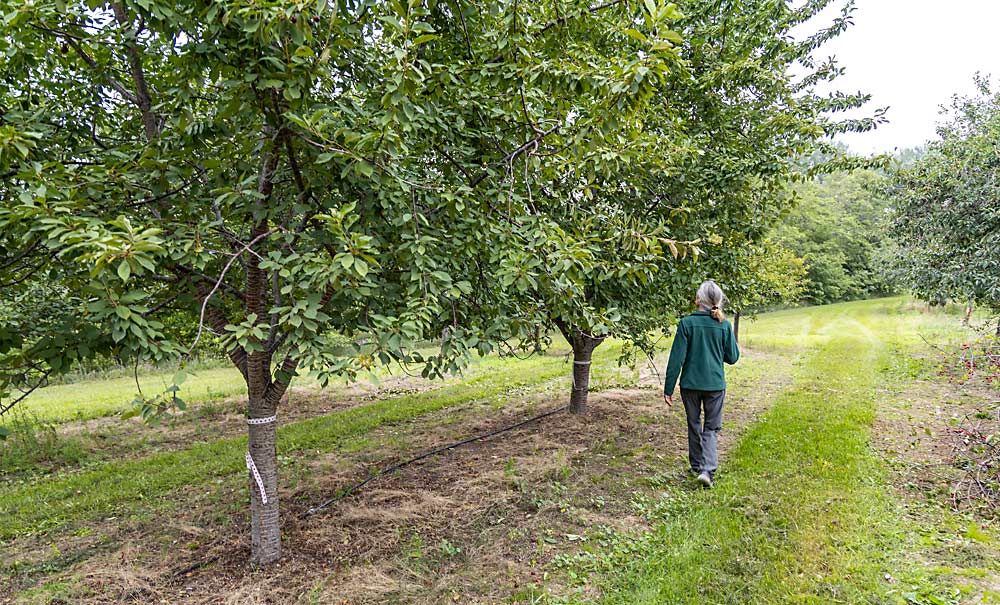
Cherry wish list
Modernizing its planting and harvest methods will be another challenge for the tart cherry industry. The traditional system of widely spaced Montmorency on Mahaleb trees, with mechanical shakers and cooling tanks, has been in use for decades. Some growers and researchers are experimenting with dwarfing rootstocks, higher-density plantings and over-the-row mechanical harvest systems as an alternative, but only in piecemeal fashion. As long as profits remain low and input costs remain high, most growers won’t have the resources for such a fundamental course correction.
Iezzoni released the Corette series of dwarfing precocious rootstocks for cherries a few years ago, but they’re still in an experimental phase. At this point, they appear more suitable for sweet cherry systems that are hand harvested, she said.
“I still hold out hope we’ll be able to figure out a production system around dwarfing rootstocks,” Nugent said. “It would help early cash-flow to not have to plant trees so far apart and wait until about year six to harvest them. That’s an expensive investment of time and land.”
Another problem, one that’s growing more “desperate” for Michigan growers, is cherry leaf spot, Nugent said. Options for controlling the fungal disease, exacerbated by climate change, are narrowing. Traditional fungicides are less and less effective, resulting in more and more sprays, and adequate control remains a struggle. Some growers have even gone back to copper after not using it for decades, he said.
Iezzoni said cherry leaf spot costs the industry an estimated $7.5 million a year. She has bred two varieties with potential resistance to the disease.
Leaf spot resistance alone would be “huge” for Michigan growers, who look forward to trialing the new varieties, said Nikki Rothwell, current coordinator of MSU’s Northwest Michigan Horticulture Research Center.
In Utah, the second biggest production state after Michigan, cherry leaf spot isn’t a major problem. Growers out West would like to see a larger cherry with resistance to powdery mildew, phytophthora and tart cherry yellows, said Utah grower Ray Rowley.
He’d also love a cherry without a pit.
“I’m not sure that’s possible,” Rowley said with a laugh. “But it would be really nice.”
—by Matt Milkovich

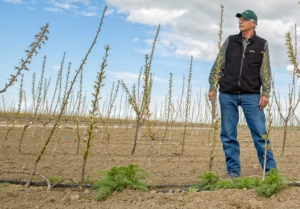
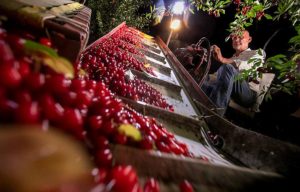





Leave A Comment